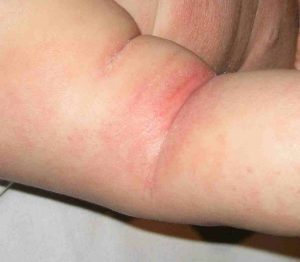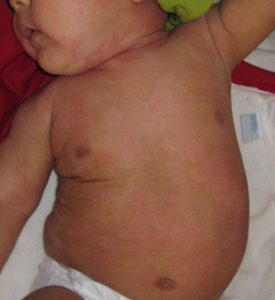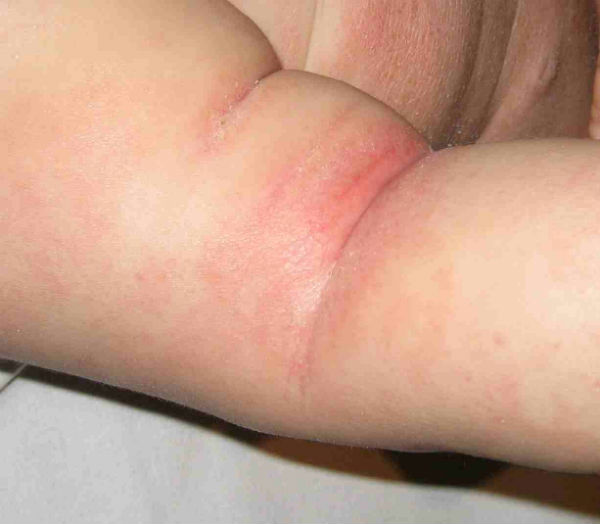In another post, I talked about what atopic dermatitis is and why people (most often children) who suffer from it have itchy, red patches on their skin.

This post is intended to provide some basic advice on how to manage this condition in the best possible way.
We must bear in mind that itchy skin is very uncomfortable and causes people with atopic dermatitis to suffer: they may become more irritable (especially young children), more nervous and even sleep worse. All of this has a significant impact on quality of life, which, in my opinion, is unacceptable, as we have various measures and treatments available to prevent it. The aim is to minimise the areas of red, rough skin, which are outbreaks of eczema or dermatitis, causing itching and discomfort.
Atopic dermatitis affects quality of life
It can be said that there are two important actions: treating areas of dermatitis and preventing them.
PREVENTION: to prevent a flare-up
The structural ‘defect’ in the skin of people with atopic dermatitis makes it drier and more sensitive than other people’s skin. Here are some tips on how to take the best possible care of your skin in order to prevent new outbreaks of dermatitis.
- Moisturize your skin thoroughly: the more moisturizer you use, the better, but you should always apply it after showering.
- Take baths/showers that are neither too long nor too short. Likewise, the water should be neither too cold nor too hot, as extreme temperatures can also irritate the skin. Long baths can increase skin dryness. The key is moderation.
- Use mild gels or shower oils, avoiding detergents and soaps that are harsh on the skin. Do not use irritating products that damage the skin (exfoliants, horsehair gloves, etc.).
- Cut your nails as short as possible to avoid scratching.
TREATMENT: when there is already an outbreak of dermatitis

To do this correctly, although it may seem obvious, it is important to differentiate between “skin with dermatitis” and “healthy skin”:
- Skin with dermatitis: it usually looks red and feels rough to the touch. It also itches. This is easy to notice in children because they scratch continuously. Sometimes cracks or small wounds can be seen.
- Healthy skin: skin that is normal in color and completely smooth to the touch. No itching.
Dermatologists usually prescribe some type of corticosteroid cream (or other “more sophisticated” creams called immunomodulators, such as Elidel® or Protopic®) to treat skin with dermatitis. This should be applied once or twice a day until the skin feels smooth and free of redness again. If there are small wounds or cracks, the cream can still be applied.
I will discuss this in another post, but we should not be afraid of treatment with corticosteroid creams, as they are a safe treatment and are key to good control of atopic dermatitis. If a flare-up occurs, they should be applied; the mistake would be to use them regularly on healthy skin.
When dermatitis flares up periodically, treatment with the cream prescribed by the dermatologist should be started as soon as the first symptoms are observed (a little redness, itching, or flaking). We should not wait until the dermatitis is severe (very red, flaky, and cracked) to apply the cream, as the later we start, the longer we will have to endure the discomfort and the more days of treatment with corticosteroid cream we will need. By starting treatment as soon as the area with dermatitis appears, we will probably only need a few days of application for it to heal.
Corticosteroid creams are key to treating atopic dermatitis. When applied properly, they are a safe treatment.
There may be cases in which, despite applying the cream for several days, the areas affected by dermatitis do not disappear or even spread. In these cases, which are less common, it is advisable to consult a dermatologist because oral treatment may be necessary.
Moisturizer should not be applied to areas with dermatitis.
Moisturizers, which are very useful for preventing new outbreaks, usually irritate areas with dermatitis, and it is therefore advisable to avoid applying them to these areas. We will use them on healthy skin as a preventive measure, avoiding areas with dermatitis.

